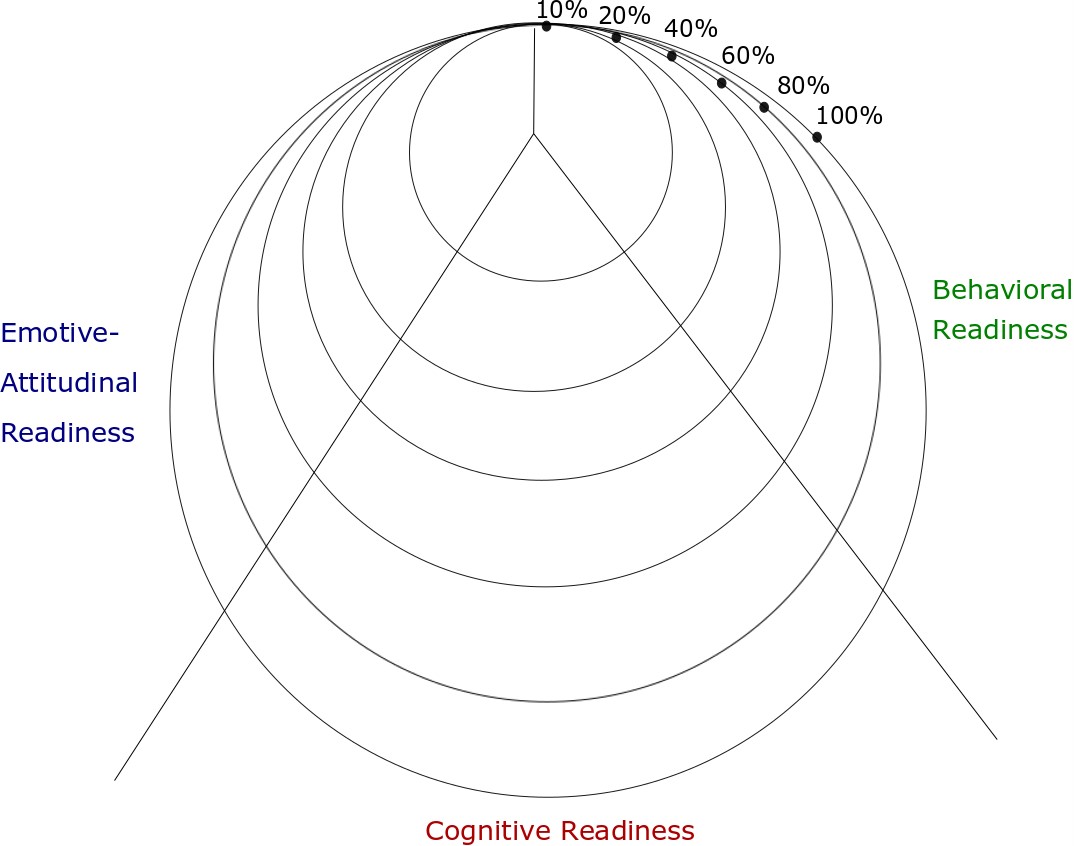Check Your Emotional – Attitudinal Readiness Before a Training
Working as a trainer requires learning through experience. In this article you will analyze your strengths and weaknesses regarding your learning readiness.

Why did I choose this tool?
While coaching many trainers I have noticed that the working time is very often a “black hole” in the professional development. Trainers are so focused on work that they forget about their own personal growth.
How does this apply to being a trainer?
As a trainer, it’s important to be aware of how open we are for receiving feedback and coping with other impulses during the training that might have an impact on our professional trainer profile.
Content:
Working as a trainer requires learning through experience.
Dressel (1980) suggests that student-centered teaching at the core of experiential learning practice must consider both cognitive and affective dynamics and orientations.
Nick Maddox, Monique Forte, and Robert Boozer from Stetson University (2000) have created The Holistic Model of Learning Readiness that is based within the conceptual framework of social learning/social cognitive theory. In this context they were generating and evaluating cognitive, emotional-attitudinal, and behavioral factors that are related to learning readiness.
Exercise:
Before you enter a workshop in the role of a trainer, make an analysis of your own strengths and weaknesses regarding learning readiness.
Analyze following features and assess them according to your strengths and weaknesses.
Use a scale to visualize your outcomes:
Emotive-Attitudinal Readiness:
- How am I emotionally ready to take responsibility for my own learning during a training?
___________________________________________________________________
not at all I am ready
Weakness Strength - How much I am enthusiastic about learning during the training?___________________________________________________________________
not at all I am very enthusiastic
Weakness Strength - How willing I am to adapt to the ambiguous and open-ended nature of experiential learning during training?___________________________________________________________________
not at all I am totally open
Weakness Strength - How much do I feel comfortable with self-direction and autonomy in learning?___________________________________________________________________
not at all I feel totally comfortable
Weakness Strength - How much do I appreciate the intrinsic value of learning?___________________________________________________________________
not at all I appreciate fully
Weakness Strength
Cognitive Readiness:
- How much do I possess the cognitive and critical thinking skills necessary to succeed as a learner?
___________________________________________________________________
not at all I possess them
Weakness Strength - How much I am aware of my own strengths and limitations in learning during a training?___________________________________________________________________
not at all I am fully aware
Weakness Strength - To what extent am I ready to make connections between learning and “real world” applications?___________________________________________________________________
not at all I am ready
Weakness Strength - How much am I aware of my personal values and willing to disclose them in the learning process?___________________________________________________________________
not at all I am aware and willing…
Weakness Strength - Am I able to integrate concepts and tools from various academic disciplines?___________________________________________________________________
not at all I am able
Weakness Strength
Behavioral Readiness:
- How much am I willing to function in a partnership with my learning peers and co-facilitators?___________________________________________________________________
not at all I am willing
Weakness Strength - How much can I adapt at organizing time demands to achieve learning goals?___________________________________________________________________
not at all I can fully
Weakness Strength
Use the following graph to illustrate your level of learning readiness. Look above at the scales, summarize the results and visualize your learning readiness. Use different colors for different features:

My learning plan:
Choose three factors that are calling your attention and interest.
1……………….
2………………
3………………
Write down ways, ideas and strategies how to strengthen chosen factors of learning readiness?
1. _____________________________________________________________
2. ____________________________________________________________
3. _____________________________________________________________
Reflection questions:
- Which other ways do you have to analyze your learning readiness?
- Which one of the categories of learning readiness is most interesting for you: Behavioral Readiness, Cognitive Readiness or Emotional-Attitudinal Readiness? Why is it so?
- Do you agree that your working time is also your learning time? How would you explain it in your own words?




